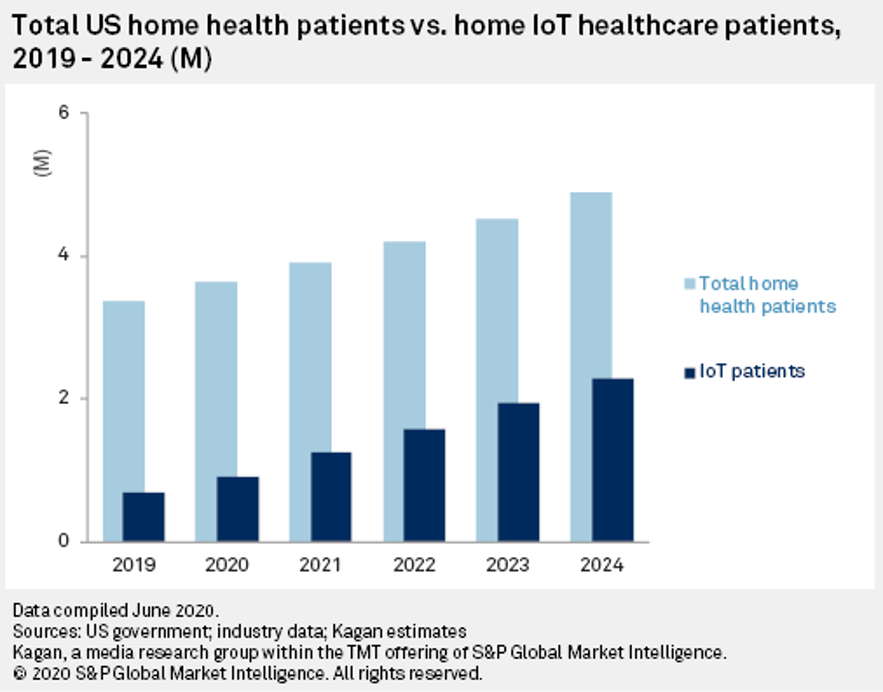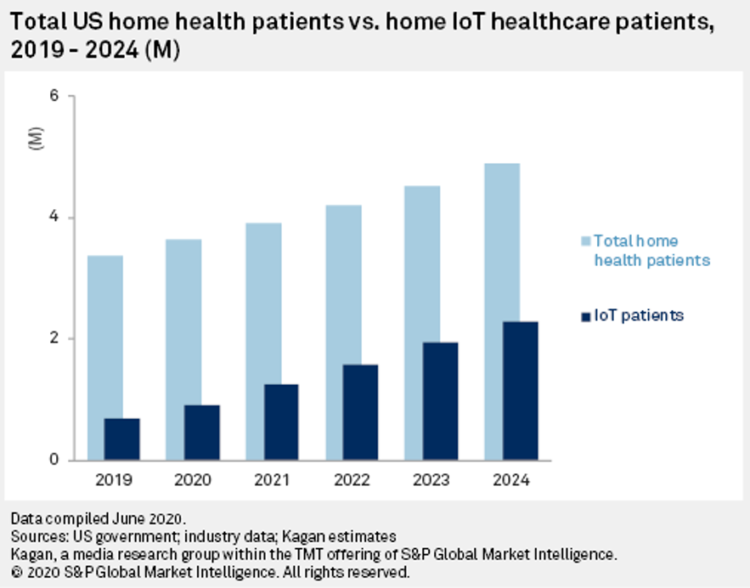The coronavirus pandemic accelerated many trends and new workflows for patients and consumers, and health care providers, too. The convergence of basic needs like hygiene and safety, financial and health security, and living-working-learning-and-cooking-at-home has turbocharged a migration of more acute care delivered at home.
I explore this growing concept in my latest essay on Medecision’s Liberation blog, How the Pandemic Is Accelerating the Hospital-At-Home Concept.
The key points are that:
 Hospital-at-home services (H-a-H) combine home visits with virtual care and remote monitoring
Hospital-at-home services (H-a-H) combine home visits with virtual care and remote monitoring- Think: advanced home care, enabled through virtual health technologies and wrap-around services both clinical and scaled social determinants support
- Virtual care, post-COVID-19 pandemic, is a new patient expectation as millions of consumers gained access to telehealth in the crisis — and liked the user-experience
- As the concept is emerging, there will be many types of H-a-H based on patient needs and provider missions
Ultimately, H-a-H is enabled through the growing Internet of Medical Things, forecasted by S&P in the diagram shown here.
Dr. John Halamka, president of Mayo Clinic Platform, recently said that “care at a distance” will persist after the pandemic. “There’s a consensus across government, academia and the industry that this is where it is going to stay,” Dr. Halamka said.
For more details on this important old-new-thing, check out my post on the Medecision site.





 Interviewed live on BNN Bloomberg (Canada) on the market for GLP-1 drugs for weight loss and their impact on both the health care system and consumer goods and services -- notably, food, nutrition, retail health, gyms, and other sectors.
Interviewed live on BNN Bloomberg (Canada) on the market for GLP-1 drugs for weight loss and their impact on both the health care system and consumer goods and services -- notably, food, nutrition, retail health, gyms, and other sectors. Thank you, Feedspot, for
Thank you, Feedspot, for  As you may know, I have been splitting work- and living-time between the U.S. and the E.U., most recently living in and working from Brussels. In the month of September 2024, I'll be splitting time between London and other parts of the U.K., and Italy where I'll be working with clients on consumer health, self-care and home care focused on food-as-medicine, digital health, business and scenario planning for the future...
As you may know, I have been splitting work- and living-time between the U.S. and the E.U., most recently living in and working from Brussels. In the month of September 2024, I'll be splitting time between London and other parts of the U.K., and Italy where I'll be working with clients on consumer health, self-care and home care focused on food-as-medicine, digital health, business and scenario planning for the future...